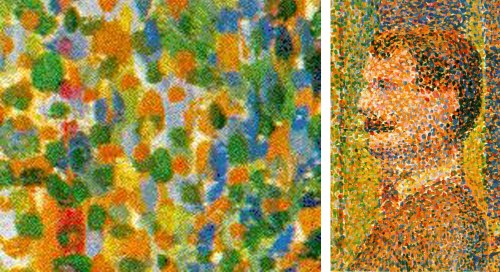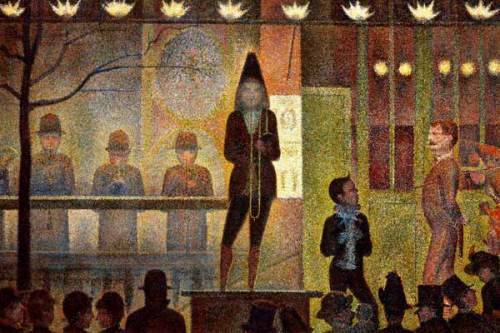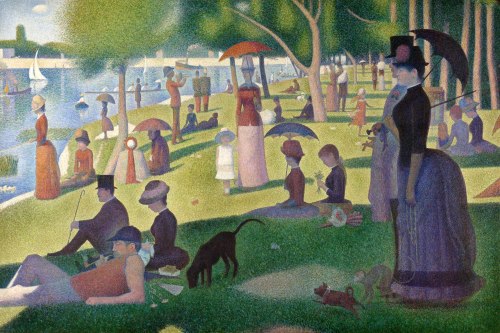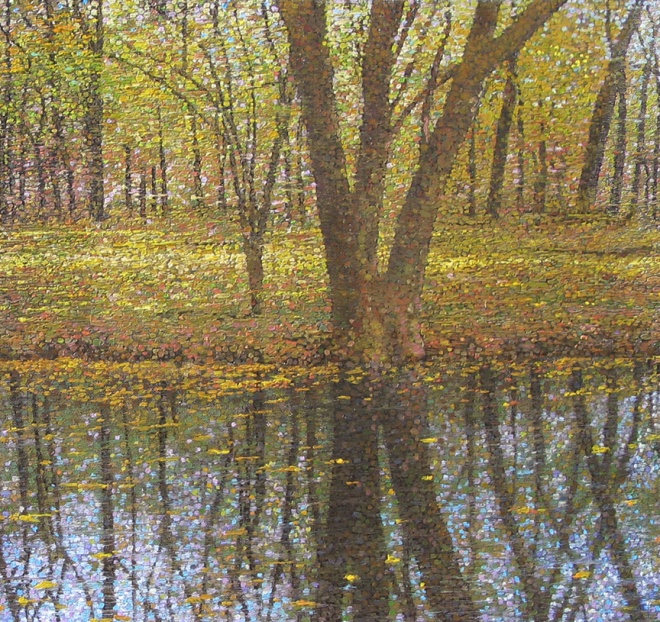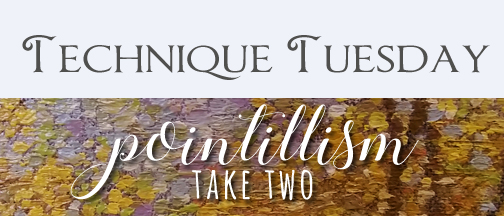
Welcome back to Technique Tuesday! Today we’re going to be talking about a technique we’ve already touched on in the blog, about two years ago. I actually think this is one of the most fun things about discussing these techniques– every artist’s work is so unique, so we can see the very same technique employed in refreshingly different ways! In 2015, we discussed pointillism and took a look at the work of GC Myers and his charmingly dappled skies. And, since I think my 2015 self introduced the topic pretty nicely, I’m going to go ahead and steal the beginning of this post from that older one!
What is it?
Pointillism is a painting technique that popped up in the late 1800’s as an off-shoot of Impressionism. Essentially, pointillism uses small, distinct dots or strokes of different colors in a pattern to form an image. This technique relies on the ability of the eye to blend the dots of color–it’s actually quite similar to the way that computer screens and printers use tiny pixels of just a few colors (most printers have just four inks, CMYK) and posititions them all just right so that our eye blends them and sees a smooth image with normal-looking colors. So instead of mixing colors on a palette, the artist presents dots on the canvas that we mix with our eyes. To give you a very basic idea, here’s a visual example:
In the close-up detail on the left, you can see a wide variety of colors–yellow, orange, red, different shades of blue, and shades of green–but take a look at the upper left corner of the crop on the right. That’s where this close-up comes from. But, when we’re a bit further away, we see the dots begin to blend into a warm shade of green. And check out how blended everything becomes when we take another proverbial step back to look at the painting as a whole:
Examples from art history:
Fun fact: when I (Pam) was in the eighth grade, my art teacher taught us our first art history mnemonic device with the rhyme “Seurat knew a lot about dots.” Yes, indeed he did! Seurat’s “A Sunday Afternoon on the Island of La Grande Jatte” is probably one of the most well-known pointillist images ever:
Georges Seurat and Paul Signac were the original pioneers of the use of pointillism, referring to it as Neo-Impressionism. “Pointillism” was actually a derisive word coined by art critics, but the connotation of the word is no longer mocking. Many artists began to experiment with this technique, including Vincent Van Gogh, Camille Pissarro, and Maximilien Luce, among many others. Later, a group known as the Divisionists would tweak the idea by using larger, more square brushstrokes to create similar blended colors and patterns.

(left) Vincent van Gogh, Self-portrait; (middle) Paul Signac, “Le Clipper, Asnieres”; (right) Camille Pissarro, “Apple Picking at Eragny-sur-Epte”
And now, for some brand new examples from Principle Gallery this year!
We are always thrilled to introduce you all to a new artist, and this Technique Tuesday post seemed like a great opportunity to introduce you to Gilbert Gorski, who brought us some incredible, brand new paintings this week! Gilbert utilizes pointillism extensively, particularly in his very wide, very realistic landscapes of trees. (Don’t forget- you can click on the images below to get a better look!)
The dots are by no means easy to see on a photo like that! Our eye visually blends them and the colors and light almost take on a shimmering quality! Here’s a detail, though, to show you what you might not see in that image:
And here’s another painting, with another close-up detail below!
To see the rest of Gilbert’s work currently at Principle Gallery, visit his page on our website by clicking here! And if you’re in the area, definitely come by to see these beauties in person– trust me, nothing compares to the real thing!

